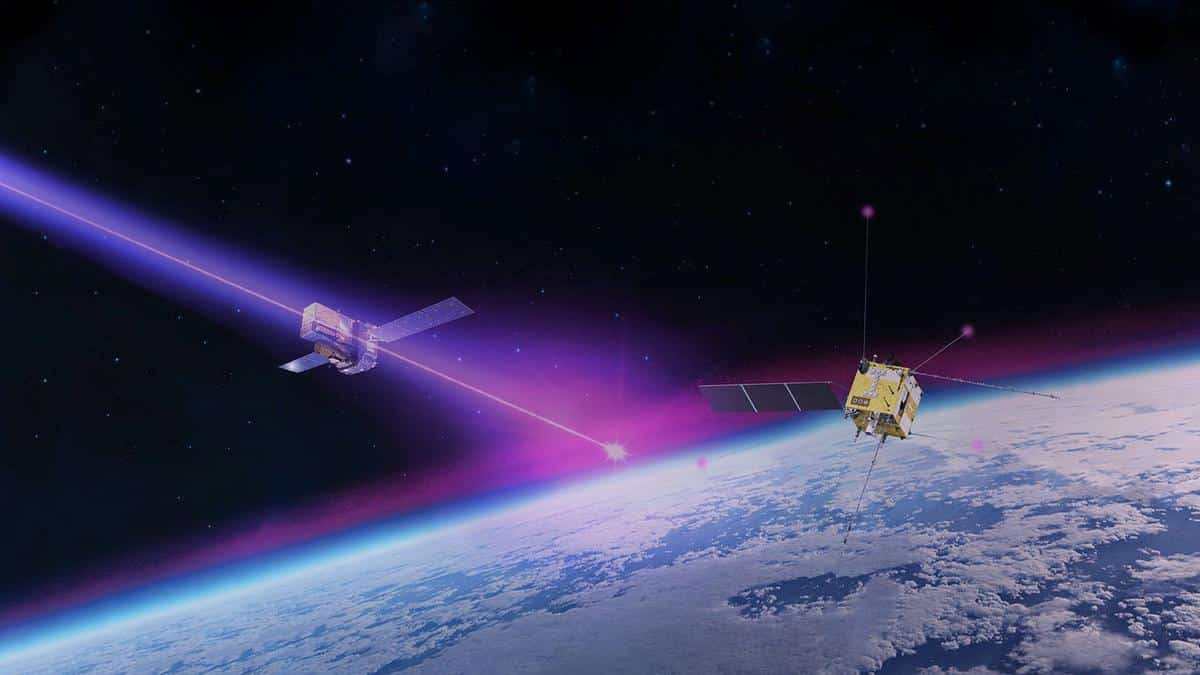About Gamma-ray burst
- It is a powerful astronomical cosmic burst of high-energy gamma-ray.
- It emits more energy in a few seconds than our Sun will emit in its lifetime.
- It has two distinct emission phases: the short-lived prompt emission (the initial burst phase that emits gamma-rays), followed by a long-lived multi-wavelength afterglow phase.
- The shortest GRBs likely mark the collision of two compact stellar remnants called neutron stars, and the longest bursts are thought to arise when a massive, rapidly spinning star collapses to form a black hole.
- Sources of Gamma Ray
- They are produced by the hottest and most energetic objects in the universe, such as neutron stars and pulsars, supernova explosions, and regions around black holes.
- On Earth, gamma waves are generated by nuclear explosions, lightning, and the less dramatic activity of radioactive decay.
What is the Ionosphere?
- It is a layer of the planet’s upper atmosphere that contains electrically charged gases called plasma.
- It is situated about 30-600 miles (50-950 km) above Earth’s surface.
- It helps form the boundary between the vacuum of space and the lower atmosphere.
- It helps protect life on Earth by absorbing harmful ultraviolet rays from the sun.
- It is highly sensitive to changing magnetic and electrical conditions in space, usually connected to solar activity.
- It also expands and contracts in response to solar radiation.
Q1) What is Solar radiation?
It refers to the energy emitted by the Sun in the form of electromagnetic waves. It’s the primary source of energy for Earth and plays a crucial role in sustaining life and driving various natural processes. This radiation encompasses a spectrum of wavelengths, including visible light, ultraviolet (UV) radiation, and infrared radiation.
Source: Gamma-ray burst in faraway galaxy disturbed Earth’s upper atmosphere
Last updated on June, 2025
→ UPSC Notification 2025 was released on 22nd January 2025.
→ UPSC Prelims Result 2025 is out now for the CSE held on 25 May 2025.
→ UPSC Prelims Question Paper 2025 and Unofficial Prelims Answer Key 2025 are available now.
→ UPSC Calendar 2026 is released on 15th May, 2025.
→ The UPSC Vacancy 2025 were released 1129, out of which 979 were for UPSC CSE and remaining 150 are for UPSC IFoS.
→ UPSC Mains 2025 will be conducted on 22nd August 2025.
→ UPSC Prelims 2026 will be conducted on 24th May, 2026 & UPSC Mains 2026 will be conducted on 21st August 2026.
→ The UPSC Selection Process is of 3 stages-Prelims, Mains and Interview.
→ UPSC Result 2024 is released with latest UPSC Marksheet 2024. Check Now!
→ UPSC Toppers List 2024 is released now. Shakti Dubey is UPSC AIR 1 2024 Topper.
→ Also check Best IAS Coaching in Delhi
























